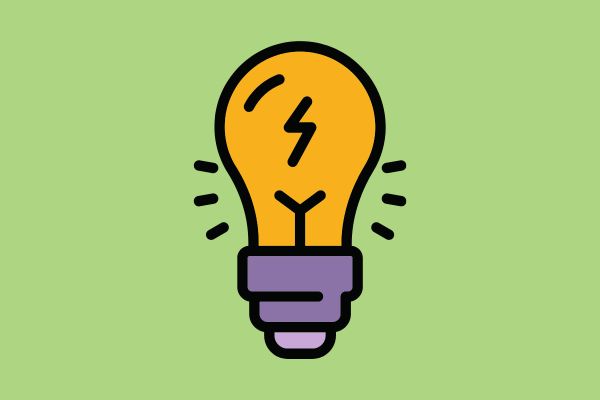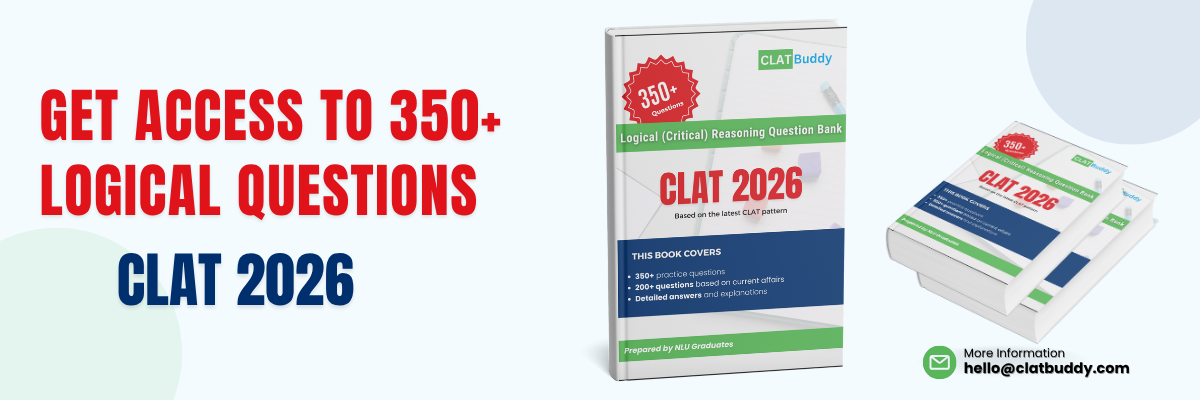Logical Reasoning for CLAT | Notes, Books and Tips

Logical reasoning is the ability to think clearly and rationally and to draw conclusions based on evidence and logic. It is an essential skill for lawyers, as they must be able to analyze complex legal arguments and construct persuasive arguments of their own.
The logical reasoning section of the CLAT exam tests students’ ability to reason deductively, inductively, and analogically. Deductive reasoning is the process of drawing conclusions from general principles. Inductive reasoning is the process of drawing conclusions from specific observations. Analogical reasoning is the process of reasoning by analogy, or comparing two things.
The logical reasoning section of the CLAT exam mostly covers critical reasoning questions.
Logical Reasoning for CLAT Syllabus
The CLAT 2024 question paper will contain about 28-32 Logical Reasoning questions in the exam. The questions will be preceded by short reading passages of 300 words. Candidates need to read the given passages and then answer the objective-type questions. Check the important CLAT 2024 Logical Reasoning syllabus and pattern highlights below:
| Particulars | CLAT Logical Reasoning Highlights |
| Type of questions | Passage-based MCQs |
| Number of reading passages | 4-6 comprehension passages of 300 words each |
| Total questions | 28-32 |
| Total marks | 28-32 |
| Negative marking | -0.25 for incorrect answer |
| Approximate weightage in CLAT exam | 20% |
Notes for Logical Reasoning for CLAT
Critical Reasoning Notes for CLAT
| Topic | Link to Notes |
| Statement Assumption Questions for Law Entrance Exams | View Here |
| How to Solve Statement Conclusion Questions for Law Entrances | View Here |
| How to Solve Assumption Conclusion Questions for Law Entrances | View Here |
| Notes on Strong and Weak Arguments | View Here |
| Strategies and Techniques for Strong and Weak Argument Questions | View Here |
| Notes on Assertion-Reasoning Questions | View Here |
| Cracking Logical Extension Questions: Strategies and Examples | View Here |
| Mastering Critical Reasoning: Strategies and Examples | View Here |
| Tips to Solve Facts, Inference and Judgment Questions for Law Entrances | View Here |
| Facts, Inference and Judgment | Explained | View Here |
| Statement, Assumption and Conclusion: Simplified | View Here |
Analytical Reasoning Notes for CLAT
| Topic | Link to Notes |
| Coding-Decoding | Explained | View Here |
| Solving Analogy Questions | View Here |
| Syllogism | View Here |
| Blood Relationship | View Here |
| Coded Relationship | View Here |
| Alphabet Relationship | View Here |
| Seating Arrangement | View Here |
| Solving Ranking | View Here |
| Cause and Effect Relationships | View Here |
| Number Series | View Here |
| Distance and Direction | View Here |
| Course of Action Questions | View Here |
| Decoding Situation-Based Questions | View Here |
| Classification Questions: Strategies and Examples | View Here |
| Time Sequence Questions: Strategies and Examples | View Here |
| Ascending and Descending Order | View Here |
| Cracking Odd Man Out Questions | View Here |
| Strategies for Solving Logical Venn Diagrams | View Here |
Best Books for Logical Reasoning for CLAT
The best books for the CLAT logical reasoning section include:
| Logical Reasoning Books for CLAT 2024 | Author | Link to the Book |
| Verbal Reasoning | RS Aggarwal | View Here |
| Analytical Reasoning | M K Pandey | View Here |
| A Modern Approach to Logical Reasoning | RS Aggarwal | View Here |
Tips to Prepare for Logical Reasoning for CLAT
Here are some tips for preparing for the logical reasoning section of the CLAT exam:
- Understand the syllabus and exam pattern. The first step is to understand the syllabus and exam pattern for the logical reasoning section. This will help you to focus your preparation on the most important topics.
- Practice regularly. The best way to improve your logical reasoning skills is to practice solving a variety of questions. There are many resources available online and in books.
- Analyse your mistakes. When you make a mistake, take some time to understand why you made it. This will help you to avoid making the same mistake in the future.
- Take mock tests. Mock tests can help you to get a feel for the format of the CLAT exam and to identify any areas where you need to improve.
- Pay attention to the details. The logical reasoning section of the CLAT exam often includes questions that require you to pay attention to small details in the passage. Be sure to read each passage carefully and underline any important information.
- Don’t be afraid to guess. If you’re not sure of the answer to a question, don’t be afraid to guess. There is no negative marking on the CLAT exam, so you can’t lose points for guessing.
- Manage your time effectively. The logical reasoning section of the CLAT exam is timed, so it’s important to manage your time effectively. Don’t get bogged down on any one question. If you’re stuck, move on to the next question and come back to it later if you have time.
Strategies to Solve Logical Reasoning Questions
Here are some specific strategies for solving different types of logical reasoning questions:
- Analogies: Analogies are questions that compare two things. To solve analogy questions, try to identify the relationship between the two things in the first pair. Then, look for the answer choice that has the same relationship between the two things in the second pair.
- Syllogisms: Syllogisms are arguments that consist of two premises and a conclusion. To solve syllogism questions, try to identify the logical form of the argument. Then, use the rules of logic to determine whether the conclusion is valid.
- Statements and assumptions: Statements and assumptions questions ask you to identify the assumptions that are necessary for a statement to be true. To solve these questions, try to think of all the possible things that could be wrong with the statement. The assumptions are the things that must be true in order for the statement to be correct.
- Statements and conclusions: Statements and conclusions questions ask you to identify the conclusions that can be logically inferred from a set of statements. To solve these questions, try to think of all the possible inferences that can be drawn from the statements. The conclusions are the statements that can be logically inferred from the premises.
Calling all law aspirants!
Are you exhausted from constantly searching for study materials and question banks? Worry not!
With over 15,000 students already engaged, you definitely don't want to be left out.
Become a member of the most vibrant law aspirants community out there!
It’s FREE! Hurry!
Join our WhatsApp Groups (Click Here) and Telegram Channel (Click Here) today, and receive instant notifications.





